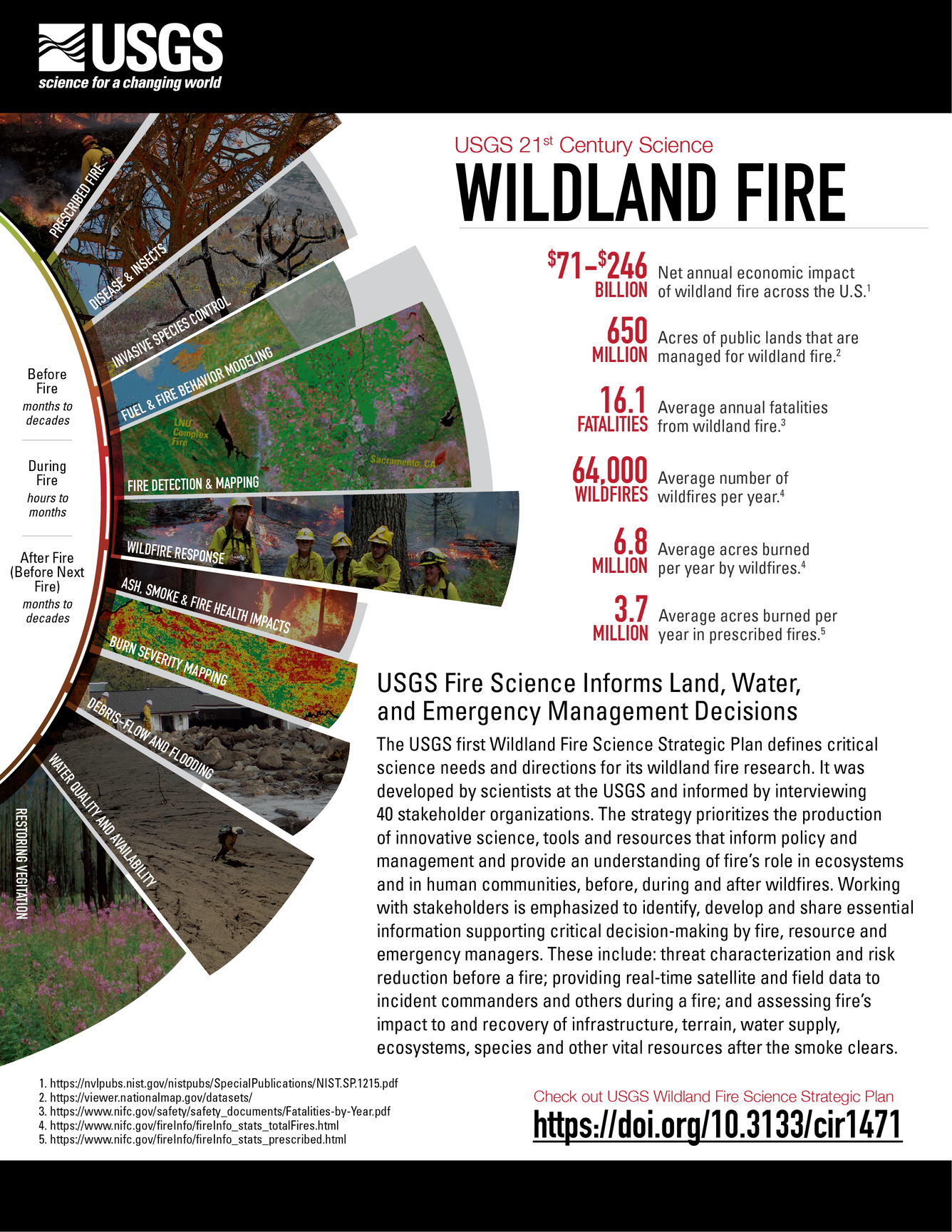Friday's Findings - April 23 2021
Roadmap Through Fire: USGS Wildland Fire Strategic Plan
Date: April 23, 2021 from 2-2:30 p.m. eastern time
Speaker: Paul F. Steblein, Wildland Fire Science Coordinator
Join the Meeting
Call in: 202-640-1187
Phone Conference ID: 166 967 135#
Background: Wildfires in the United States can be devastating, with 2017, 2018, and 2020 being particularly damaging and costly. To help minimize the detrimental impacts of wildfires while allowing for fire’s beneficial aspects to unfold, the U.S. Geological Survey has developed a new five-year science strategy that defines critical science needs and directions for its wildland fire research. The strategy was developed by scientists and communication specialists at USGS and informed from interviews with 40 different stakeholder organizations. It prioritizes the production of innovative science, tools and resources that inform land management and provide an understanding of fire’s role in ecosystems and in human communities, before, during and after wildfires. Working with stakeholders is emphasized to identify, develop and share essential information that supports critical decision-making by fire, resource and emergency managers. These include threat characterization and management planning before a fire and providing real-time satellite and field data to incident commanders and others during a fire. It also includes assessing fire’s impacts on infrastructure, terrain, water supply, ecosystems, species and other vital resources after the smoke clears. The new USGS fire science strategic plan prioritizes the production of state-of-the-art, actionable fire science. We seek to collaborate in this effort with federal, Tribal, state and other stakeholders, to ensure that data and tools are timely, relevant and widely disseminated. Finally, the plan sets up an organizational structure that helps ensure these outcomes.
650 MILLION Acres of public lands that are managed for wildland fire. [2]
16.1 FATALITIES Average annual fatalities from wildland fire. [3]
64,000 WILDFIRES Average number of wildfires per year. [4]
6.8 MILLION Average acres burned per year by wildfires. [4]
3.7 MILLION Average acres burned per year in prescribed fires. [5]
USGS Fire Science Informs Land, Water, and Emergency Management Decisions. The USGS first Wildland Fire Science Strategic Plan defines critical science needs and directions for its wildland fire research. It was developed by scientists at the USGS and informed by interviewing 40 stakeholder organizations. The strategy prioritizes the production of innovative science, tools and resources that inform policy and management and provide an understanding of fire’s role in ecosystems and in human communities, before, during and after wildfires. Working with stakeholders is emphasized to identify, develop and share essential information supporting critical decision-making by fire, resource and emergency managers. These include: threat characterization and risk reduction before a fire; providing real-time satellite and field data to incident commanders and others during a fire; and assessing fire’s impact to and recovery of infrastructure, terrain, water supply, ecosystems, species and other vital resources after the smoke clears.
Check out USGS Wildland Fire Science Strategic Plan at https://doi.org/10.3133/cir1471
Sources:
[1] https://nvlpubs.nist.gov/nistpubs/SpecialPublications/NIST.SP.1215.pdf
[2] https://viewer.nationalmap.gov/datasets/
[3] https://www.nifc.gov/safety/safety_documents/Fatalities-by-Year.pdf
[4] https://www.nifc.gov/fireInfo/fireInfo_stats_totalFires.html
[5] https://www.nifc.gov/fireInfo/fireInfo_stats_prescribed.html



